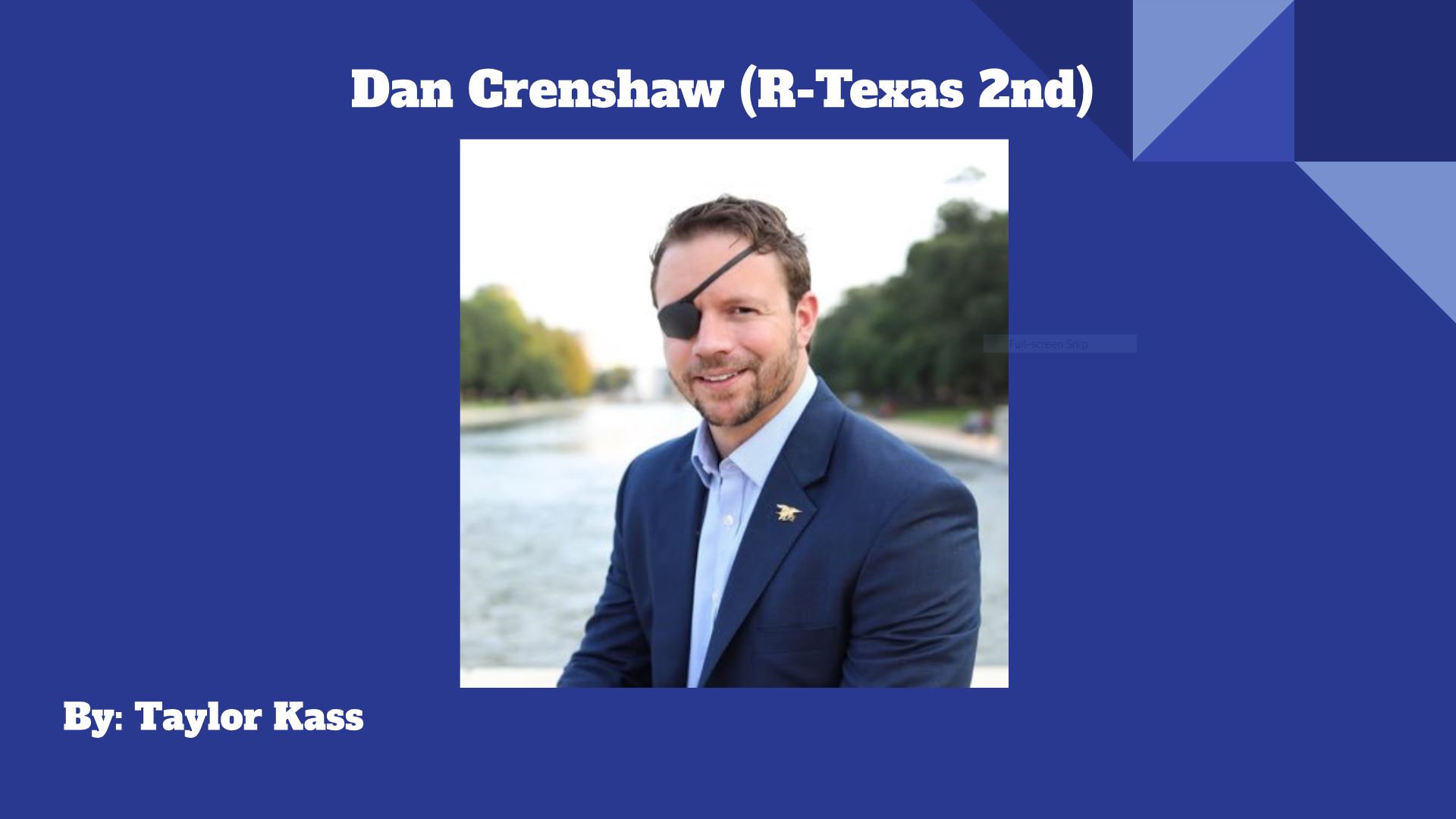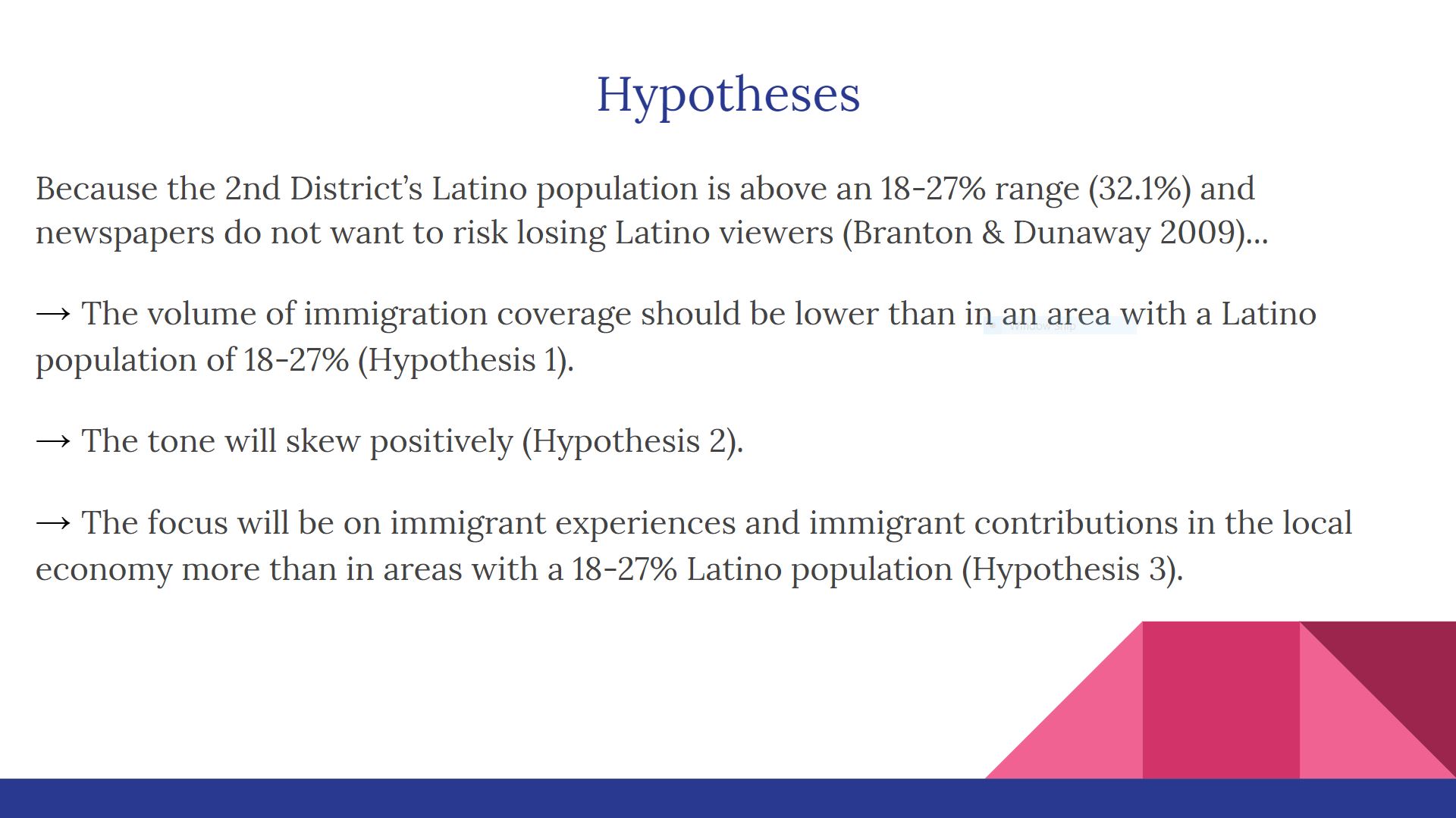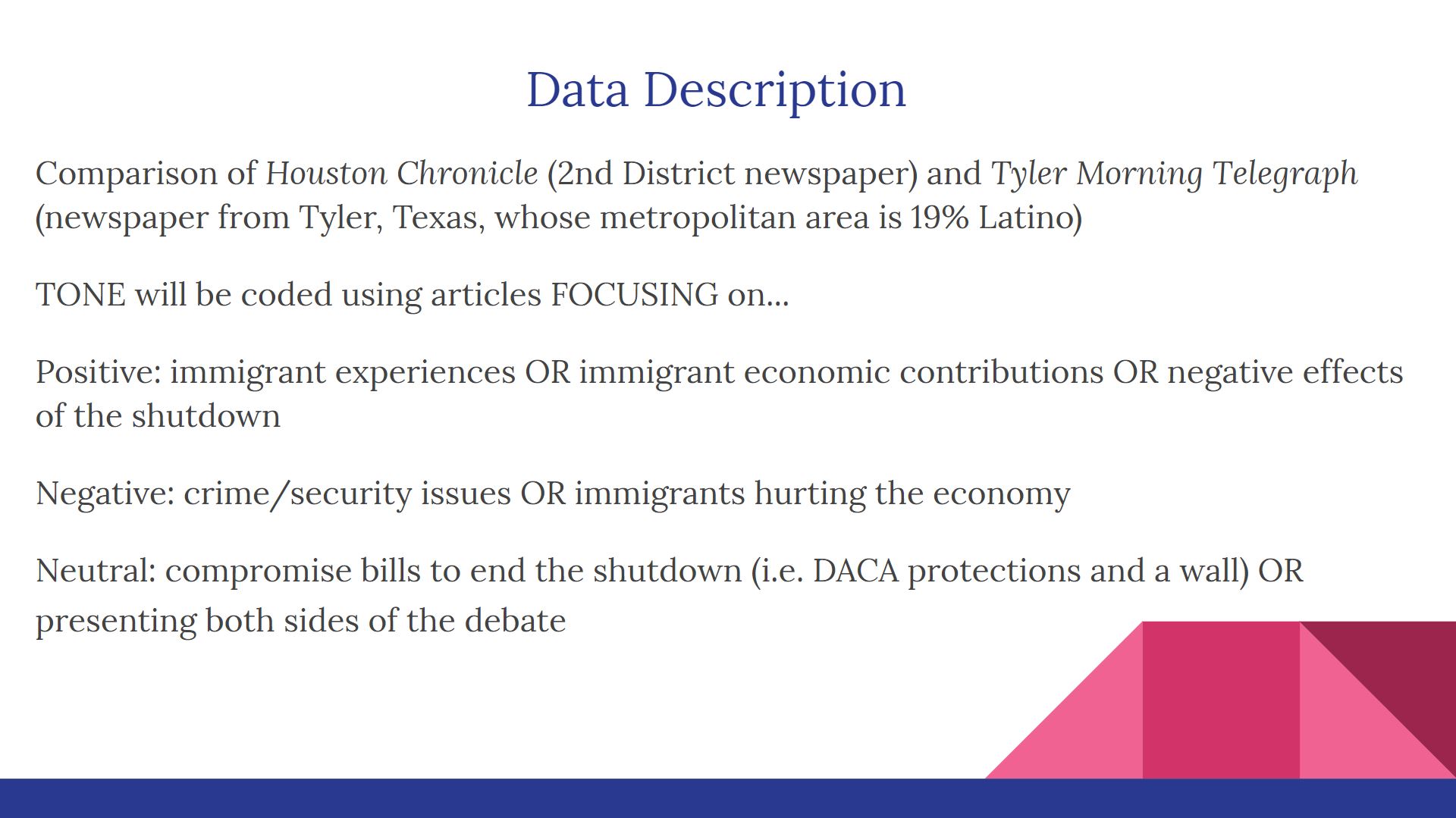

This presentation focuses on a finding by Regina Branton and Johanna Dunaway that immigration coverage and, more specifically, negative depictions of immigrants by newspapers increase as the Latino population in a district increases up to a certain point (between 18% and 27%) in California. This is due to the issue of immigration being more local due to the geographical proximity to the border and a growing Latino population that residents may fear threaten security and take away economic opportunities from natives. With the 2nd District located in Texas, another border state, this theory would likely be applicable. As the Latino population exceeds this point, however, newspapers decrease both their coverage of immigration and negative aspects of immigration attributed to Latinos because they worry continuing this coverage will alienate a large consumer-base needed to stay in operation. Since the 2nd District’s Latino population is currently 32.1% of the total population and above the 18-27% range, this analysis predicts coverage of immigration and negative depictions of immigrants will be less than in another market with a Latino population within the 18-27% range and a more positive tone will be made towards immigrants. Additionally, this analysis predicts the focus of stories in the 2nd District will be on immigrant experiences and immigrant contributions to the economy and away from the threat narrative of crime and economic pain that would be more readily presented in a market with a Latino population within the 18-27% range.

Newspapers were the chosen sources of media to make the results of this analysis most comparable to Branton and Dunaway’s research (they also used newspapers). The newspapers chosen for this analysis were the Houston Chronicle and the Tyler Morning Telegraph. The Houston Chronicle is the largest newspaper in the 2nd District, and the Tyler Morning Telegraph is the largest newspaper from Tyler, Texas, an area with a Latino population of 19%, which is within the 18-27% range where media companies see painting immigration and negative depictions of immigrants as important to maximizing profits. The two newspapers were chosen to be with the same state for two reasons: the first is that Branton and Dunaway also used data from only one state to test their hypothesis (California), and the second is that restricting newspaper coverage within the same state controls for state laws and state political rhetoric that influences news coverage. Regarding tone, articles showing immigrant experiences, immigrant economic contributions, or negative effects of the shutdown all denote positive experiences. Showing immigrant experiences within a broader society, usually through immigrants sharing their immigration stories or through political activism against restrictionist policies, and the economic benefits of immigration, often through reports saying how cutting immigration levels would hurt the US economy, counteract the Latino threat narrative, which portrays Latino immigrants disproportionately as being criminals and taking economic opportunities from natives. The last criteria, showing the downsides of the shutdown, was included because the premise for the shutdown was for President Trump to receive funding for his wall, and stories that prioritize the negative effects of the shutdown ignore this motive and imply that obtaining funding for the wall is insignificant in comparison. This is positive for immigrants because it implies that Americans are willing to prioritize other services over a policy meant to keep out immigrants. Articles are negative if they highlight problems associated with immigration, like crime/security concerns and immigrants taking economic opportunities from natives or draining social services, as they support the Latino threat narrative. Finally, articles are neutral if they show no preference for positive or negative aspects of immigration, including if an article presents both sides of an issue without making a judgment of which side is better or promoting a compromise bill that includes restrictionist and liberal measures (e.g. DACA protections and a wall). Articles were excluded if they came up within the seven search terms (“immigration,” “immigrant,” “border,” “wall,” “undocumented,” “shutdown,” and “security.”) but were not related to the topic of immigration or the shutdown (e.g. a story mentioning a “wall” painting).

The Houston Chronicle articles have a disproportionate emphasis on immigration in comparison to the Tyler Morning Telegraph. 8.3% of all articles in The Houston Chronicle from December 11, 2018 to January 31, 2019 discuss immigration or shutdown-related material, while 2.9% of all articles in the Tyler Morning Telegraph do the same. 75% of all Houston Chronicle articles included positive material, 18.5% were negative, and 6.5% were neutral. Meanwhile, 46.8% of all Tyler Morning Telegraph articles were positive, 40.3% were negative, and 13% were neutral. Articles in the Houston Chronicle skews toward positive material, while the Tyler Morning Telegraph has significantly more negative articles and slightly more neutral articles than in the Houston Chronicle.

The Houston Chronicle’s greater emphasis on immigration-related articles than the Tyler Morning Telegraph rejects Branton and Dunaway’s hypothesis that media outlets will decrease their coverage of immigration after the Latino population surpasses an 18-27% range. However, the Houston Chronicle pays less attention to negative coverage of Latino immigration and more attention to stories that focus on immigrant experiences/positive contributions of immigrants (29.4% of immigration articles in the Houston Chronicle have this focus, as opposed to 20.8% of immigration articles in the Tyler Morning Telegraph), which supports Branton and Dunaway’s hypothesis that negative coverage of immigration will decrease as the Latino population passes the 18-27% range. This potentially occurred because of Latino backlash to negative public perceptions of them, which caused media coverage not to decrease, but to include more positive images of immigrants to appease their large Latino consumer base. While the Tyler Morning Telegraph features more coverage of negative stories than the Houston Chronicle, it should be noted that positive stories still outnumbered negative ones, questioning whether the Latino threat narrative is truly the predominant media narrative, even in areas where Latinos comprise 18-27% of the population. An interesting fact about the amount of positive coverage of Latinos, however, is that 60.2% of all positive articles in the Houston Chronicle and 55.6% of all positive articles in the Tyler Morning Telegraph focused on the negative impact of the shutdown. This shows that even articles which positively frame immigrants focus more on the costs restrictive policies have on natives, as opposed to directly discussing immigrant experiences and contributions. Framing immigration in this manner still leaves consumers of the news in the dark about competing images to the Latino threat narrative, questioning whether increasing positive coverage in high-Latinos areas changes stereotypes or just paints other issues as being more important than immigration.